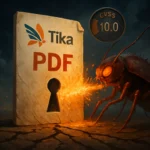Cybersecurity researchers have uncovered a severe vulnerability in SSL.com’s domain validation process that allowed threat actors to obtain valid TLS certificates for domains without proving ownership. This critical security flaw in the certificate authority’s infrastructure exposed numerous organizations to potential impersonation attacks.
Understanding the Domain Validation Vulnerability
The security flaw resided in SSL.com’s implementation of Domain Control Validation (DCV) through DNS TXT records. The system contained a critical logic error where it incorrectly validated domain ownership by focusing on the email address domain rather than the actual domain undergoing verification. This implementation flaw effectively bypassed the fundamental security principle of domain control verification.
Technical Analysis of the Exploit
Security researcher “Sec Reporter” demonstrated the vulnerability by successfully obtaining valid TLS certificates for aliyun.com without having any actual control over the domain. The exploit did not require the presence of a _validation-contactemail DNS TXT record on the target domain, making the attack particularly concerning from a security perspective.
Impact Assessment and Affected Organizations
The security incident resulted in the compromise of multiple high-profile domains, necessitating the revocation of 11 incorrectly issued certificates. Notable affected organizations included:
– Alibaba Cloud (aliyun.com)
– Medinet (Canadian healthcare software provider)
– Gurusoft (Singapore-based technology company)
Security Implications and Threat Vectors
The vulnerability exposed organizations to several critical security risks:
– Potential for sophisticated phishing campaigns using legitimate certificates
– Man-in-the-middle (MITM) attack capabilities
– Compromise of HTTPS-protected communications
– Unauthorized impersonation of legitimate websites
Remediation and Response Measures
SSL.com has taken immediate action by temporarily disabling the compromised DCV method while developing a comprehensive fix. The certificate authority has committed to providing a detailed incident report by May 2nd, demonstrating their commitment to transparency and security improvement.
This security incident serves as a crucial reminder of the importance of robust domain validation mechanisms in the public key infrastructure. It highlights the need for regular security audits of certificate authorities’ validation procedures and emphasizes the critical role of proper implementation of security controls in maintaining the integrity of HTTPS ecosystems. Organizations are advised to monitor their SSL certificates and implement Certificate Transparency monitoring to detect unauthorized certificate issuance.






